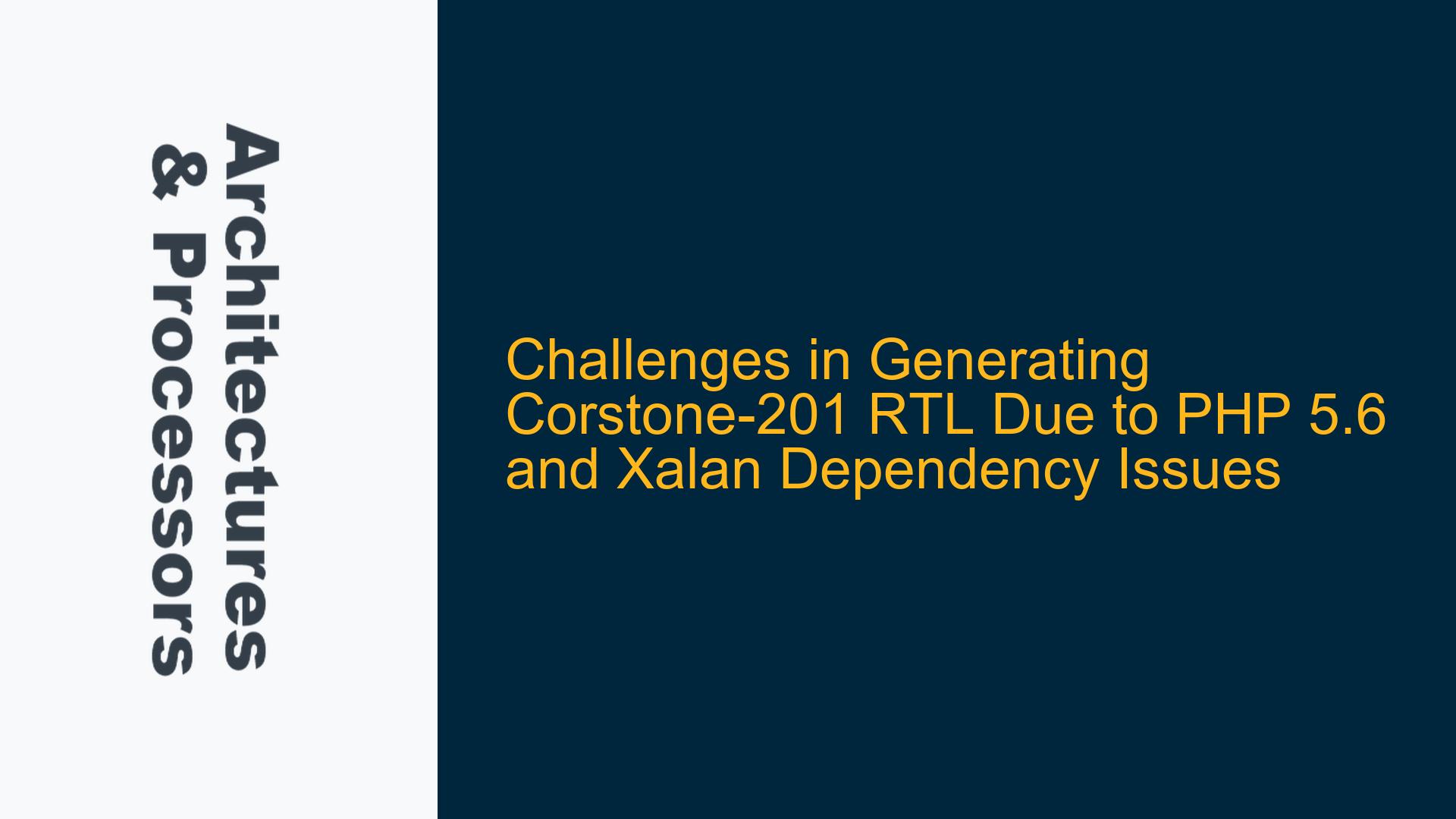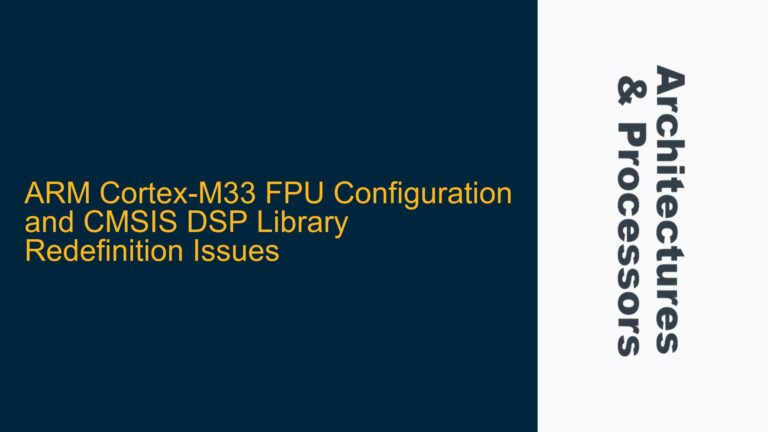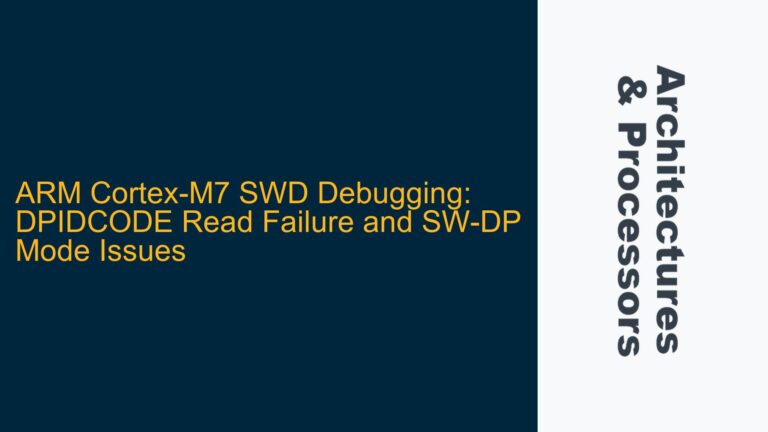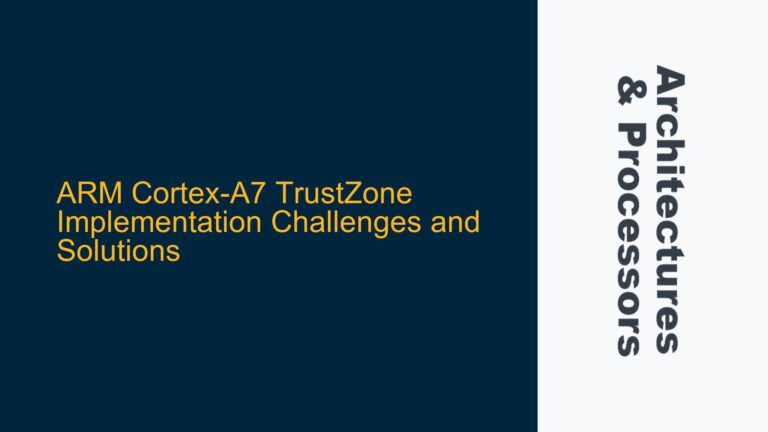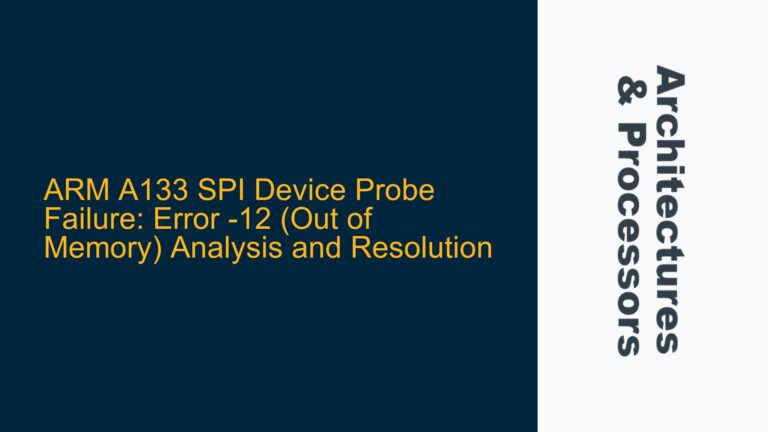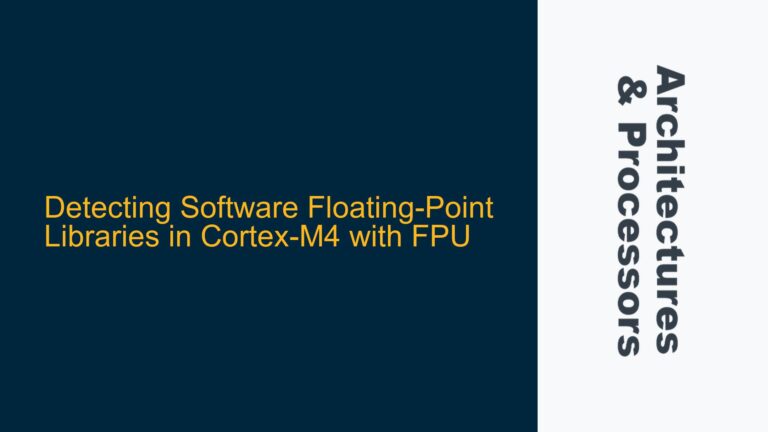PHP 5.6 and Xalan: Criticality in Corstone-201 RTL Generation
The generation of the top-level RTL for the Corstone-201 subsystem is a complex process that relies on a variety of tools and dependencies. Among these, PHP 5.6 and Xalan have been identified as potential bottlenecks due to installation challenges on RHEL 8.4. PHP 5.6 is a scripting language that is often used for automating tasks within the RTL generation process, while Xalan is an XSLT processor that is crucial for transforming XML documents into other formats, which is a common requirement in RTL generation workflows.
The criticality of PHP 5.6 and Xalan in the RTL generation process cannot be understated. PHP 5.6 is often used to script the automation of various tasks, such as file manipulation, data extraction, and even some aspects of the synthesis process. Without PHP 5.6, these tasks would need to be performed manually, which is not only time-consuming but also prone to human error. Xalan, on the other hand, is essential for handling XML-based configurations and transformations. In the context of Corstone-201, XML files are often used to define the configuration of the subsystem, and Xalan is required to transform these XML files into a format that can be understood by the RTL generation tools.
Given the importance of these tools, it is clear that resolving the dependency issues is crucial for the successful generation of the top-level RTL. However, the challenges associated with installing PHP 5.6 and Xalan on RHEL 8.4 are non-trivial. RHEL 8.4, being a modern operating system, has moved away from older versions of software, including PHP 5.6, in favor of more recent versions. This has led to dependency conflicts that make it difficult to install PHP 5.6 and Xalan without significant effort.
Dependency Conflicts and Compatibility Issues in RHEL 8.4
The primary issue with installing PHP 5.6 and Xalan on RHEL 8.4 stems from the fact that RHEL 8.4 has deprecated many of the libraries and dependencies that these tools rely on. PHP 5.6, for instance, requires older versions of libraries such as libxml2, libcurl, and libjpeg, which are no longer available in the default repositories of RHEL 8.4. Similarly, Xalan depends on older versions of the Xerces-C library, which is also not readily available in RHEL 8.4.
The dependency conflicts arise because RHEL 8.4 has moved to newer versions of these libraries, which are not backward compatible with the versions required by PHP 5.6 and Xalan. For example, libxml2 in RHEL 8.4 is version 2.9.7, while PHP 5.6 requires version 2.8.0. The newer version of libxml2 has introduced changes in the API and ABI that are not compatible with PHP 5.6, leading to compilation and runtime errors. Similarly, Xalan requires an older version of the Xerces-C library, which is not available in RHEL 8.4, leading to similar compatibility issues.
Another factor contributing to the dependency conflicts is the way RHEL 8.4 handles package management. RHEL 8.4 uses the DNF package manager, which is designed to prioritize stability and security over backward compatibility. This means that DNF will not allow the installation of older versions of packages if they conflict with the versions already installed on the system. As a result, attempting to install PHP 5.6 and Xalan on RHEL 8.4 often results in dependency resolution failures, making it difficult to proceed with the RTL generation process.
Resolving Dependency Issues and Alternative Approaches
Given the challenges associated with installing PHP 5.6 and Xalan on RHEL 8.4, it is important to explore alternative approaches to resolve the dependency issues and ensure the successful generation of the top-level RTL for the Corstone-201 subsystem. One possible approach is to use containerization technologies such as Docker to create an isolated environment where PHP 5.6 and Xalan can be installed without conflicting with the host system’s dependencies.
Docker allows you to create a container that includes all the necessary dependencies for PHP 5.6 and Xalan, effectively isolating them from the host system. This approach has several advantages. First, it allows you to use older versions of libraries and dependencies without worrying about conflicts with the host system. Second, it provides a consistent environment that can be easily replicated across different systems, ensuring that the RTL generation process is reproducible. Finally, Docker containers are lightweight and can be easily deployed, making them an ideal solution for this type of problem.
To implement this approach, you would need to create a Dockerfile that specifies the base image, installs the necessary dependencies, and configures the environment for PHP 5.6 and Xalan. The Dockerfile would look something like this:
FROM centos:7
# Install necessary dependencies
RUN yum install -y php56 xalan xerces-c
# Set up the environment
ENV PATH /usr/local/php56/bin:$PATH
# Copy the RTL generation scripts into the container
COPY . /rtl-generation
# Set the working directory
WORKDIR /rtl-generation
# Run the RTL generation script
CMD ["php", "generate_rtl.php"]
Once the Dockerfile is created, you can build the Docker image using the following command:
docker build -t corstone-201-rtl-generation .
After the image is built, you can run the container using the following command:
docker run -it --rm corstone-201-rtl-generation
This will start the container and execute the RTL generation script, allowing you to generate the top-level RTL for the Corstone-201 subsystem without worrying about dependency conflicts on the host system.
Another alternative approach is to use a virtual machine (VM) with an older version of RHEL or CentOS that supports PHP 5.6 and Xalan. This approach is similar to using Docker but involves more overhead, as VMs require more resources and are generally slower to start up. However, if Docker is not an option, using a VM with an older version of RHEL or CentOS can be a viable alternative.
To implement this approach, you would need to download an ISO image of an older version of RHEL or CentOS, such as RHEL 7 or CentOS 7, and install it on a virtual machine. Once the VM is set up, you can install PHP 5.6 and Xalan on the VM and use it to generate the top-level RTL for the Corstone-201 subsystem. This approach has the advantage of providing a fully isolated environment, but it requires more resources and is less convenient than using Docker.
In conclusion, while the dependency issues associated with PHP 5.6 and Xalan on RHEL 8.4 are challenging, they can be resolved using containerization technologies such as Docker or by using a virtual machine with an older version of RHEL or CentOS. These approaches provide a way to isolate the necessary dependencies and ensure the successful generation of the top-level RTL for the Corstone-201 subsystem. By carefully considering the trade-offs between these approaches, you can choose the one that best fits your needs and proceed with the RTL generation process.
